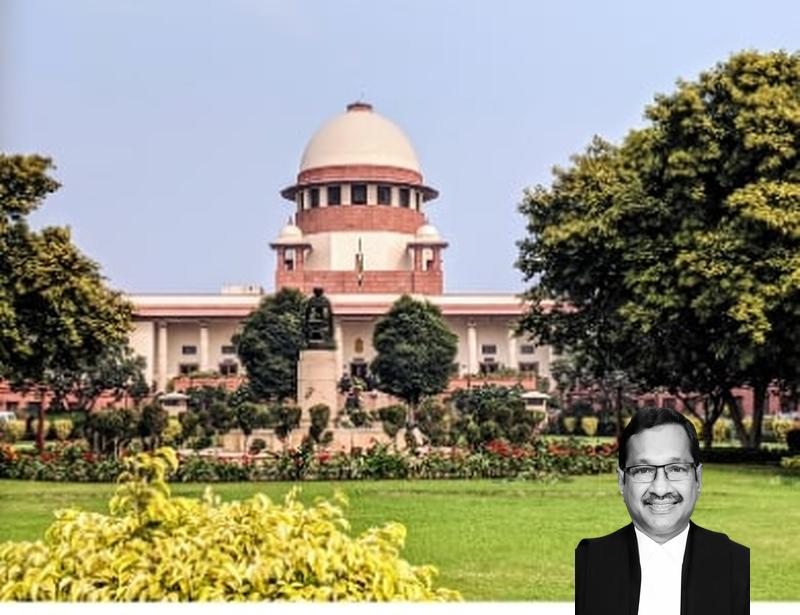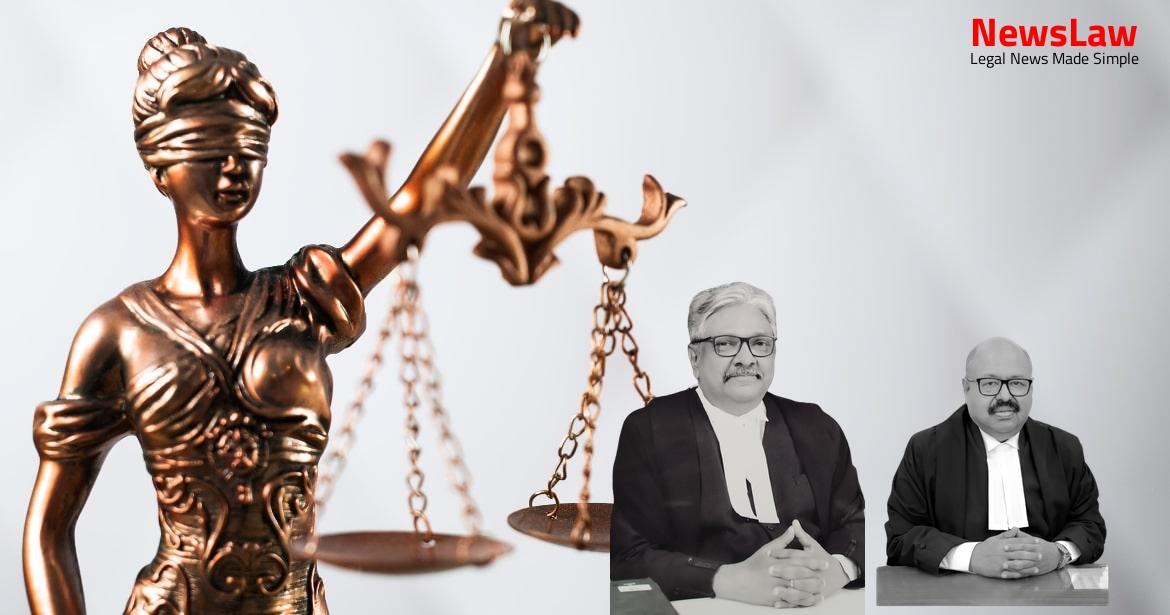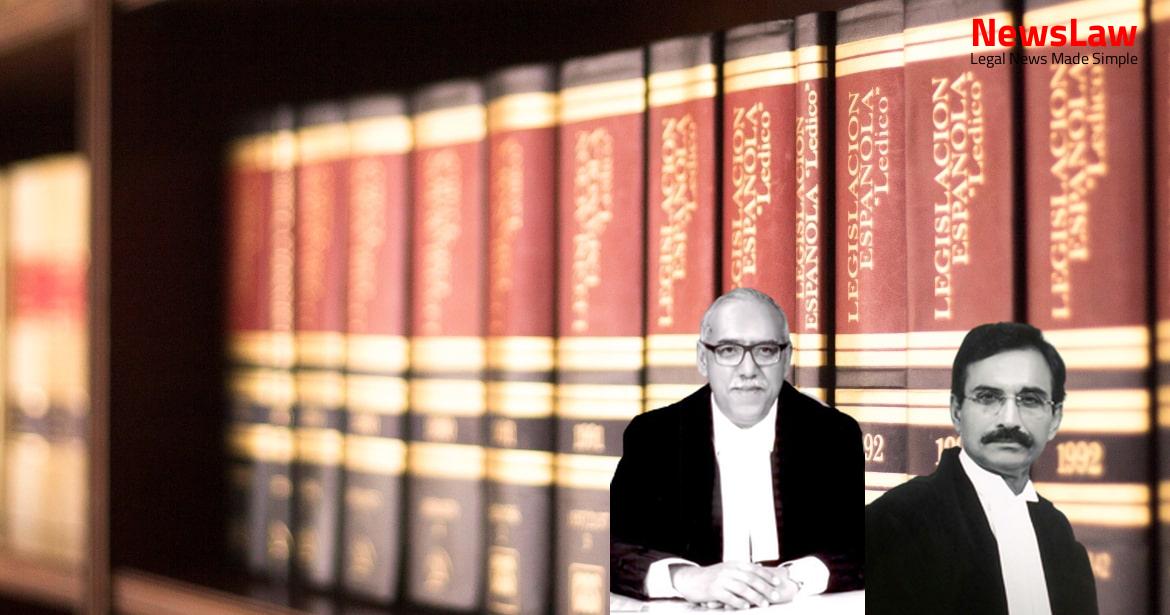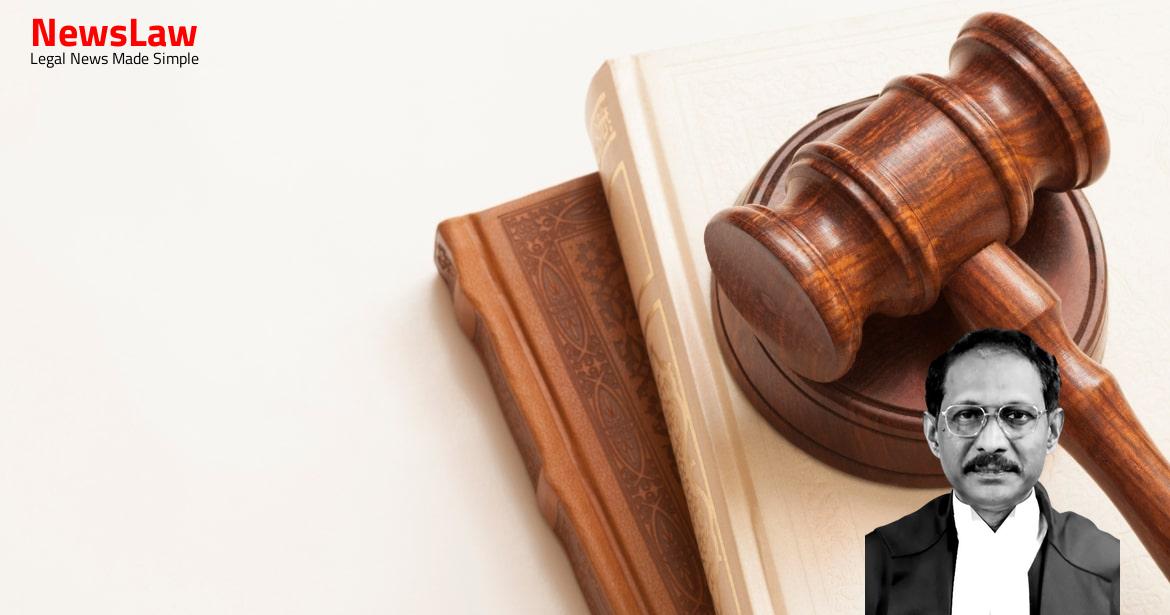These appeals are at the instance of a convict accused sentenced to death for the offence of rape and murder of a 10-year old girl named “X” and are directed against a common 2 judgment and order passed by the High Court of Judicature at Patna dated 10.04.2018 in the Death Reference No 4 of 2017 with Criminal Appeal (DB) No 358 of 2017 by which the High Court dismissed the Criminal Appeal filed by the appellant convict herein and thereby confirmed the judgment of conviction and sentence of death passed by the Additional Sessions Judge- I, Bhagalpur in the Sessions Trial No 581 of 2015 for the offence punishable under Sections 302 and 376 resply of the Indian Penal Code (for short, ‘IPC’) and Section 4 of the Protection of Children from Sexual Offences Act, 2012 (for short, ‘POCSO Act’). Time and again this Court has pointed out that on a reference for confirmation of the sentence of death, the High Court is under an obligation to proceed in accordance with the provisions of Sections 367 and 368 resply of the CrPC. Short fact of the case is that on 01.06.2015 at about 12:45 PM, fardbeyan of Kiran Devi (P.W.2) wife of Arvind Sah and mother of the victim was recorded by Sub- Inspector of Police-cum-S.H.O. While the informant went to the house of Munna Pandey (appellant) in search of her daughter, she found that the house of Munna Pandey 4 (appellant) was locked.
When lock of the room of Munna Pandey (appellant) was opened, dead body of the daughter of the informant was found beneath the bed. The Trial Court framed charge vide order dated 04.11.2015 against the appellant and the co-accused for the offence punishable under Sections 376(2)(g), 302 read with Section 34, 120B of the IPC and Section 4 of the POCSO Act. 1 and he also proved the signature of Kiran Devi/P.W.2 (informant) of the case, which was marked as Ext. Upon appreciation of the oral and documentary evidence on record, the Trial Court recorded a finding that the appellant herein was guilty of the offence he was charged with. Case purely of circumstantial evidence 1.1 The case against the Appellant, Munna Pandey is based only on the last seen evidence and the conduct of the Appellant and hence entirely circumstantial in nature. 2.1 Medical examination of the accused u/s 53A of CrPC is required in cases of rape.
3.2 As per the order dated 29.06.2015, a letter on behalf of the officer in-charge of PS Sabour was filed before the Ld Trial Court seeking permission to send the articles to FSL Patna for examination. However, PW1, PW2 and PW3 in their Court testimony, which was recorded 3 months after Pritam Tiwari was declared a Juvenile by the Juvenile Justice Board [Ex A (order of the JJB)] improved their statement and said that it was Munna Pandey and not Pritam Tiwari. 4.3 PW2 in her Fardbeyan [Ex 1] which was recorded right after the victim’s body was recovered does not mention anything about the Appellant in the context of a last seen evidence but improves her testimony in Court to state that the Appellant was last seen with the victim. However Kushboo Devi, the aunt was not examined as a last seen witness but only PW3 (a minor) was examined by the prosecution to prove its case.
Conduct of the accused at the relevant time 5.1 Frequent quarrels used to take place between Naval Kishore Ojha @ Fucchan Pandey and Munna Pandey and hence they have been residing separately. 5.4 As per the case of the prosecution, the door of Munna Pandey’s room was opened by the villagers after they snatched the keys from Munna Pandey although he claimed that he did not have the keys to the house on the previous day. Alleged Confession of Pritam Tiwari implicating Munna Pandey cannot be relied upon 6.1 As per the prosecution, right after Pritam Tiwari was found in the house of Fucchan Pandey by the villagers; he confessed to his crime and stated that he along with Munna Pandey committed the offence against the deceased. Those are as under:- The circumstance of PW3 seeing the Appellant lock the grill and the door of his room The circumstance that the Appellant gave false information to PW3 that the victim had already left after watching TV The circumstance of the accused refusing to open the door as he did not have the key The circumstance of the Appellant giving the keys to the villagers after he was assaulted The circumstance of the alleged extra-judicial confession made by the co-accused Pritam Tiwari implicating the Appellant 7.2 This Hon’ble Court has consistently held that the circumstances not put to the Appellant cannot be relied upon to convict an accused 13 8. 8.2 The High of Judicature at Patna, in the impugned judgment [at para 9]; observes that it is prima facie satisfied that the Trial Court has not committed any error in both convicting the Appellant and sentencing him to death.
9.2 The Appellant has filed a mitigation report along with the affidavits of the family members and the villagers before this Hon’ble Court vide IA No 172211 of 2022. Aktar @ Pairu Miyan (resident of village Sabour)
the Appellant worked actively for the community alongside his wife. In such circumstances, referred to above, the learned counsel prayed that there being merit in his appeals, the same be allowed and the judgment and order of conviction and capital sentence be set aside and the appellant may be acquitted of all the charges. It was also argued that when the house was opened, the dead body of the victim was recovered beneath a cot and the room from where the dead body was recovered was of the ownership of the appellant.
The learned counsel submitted that the facts established are consistent only with the hypothesis of the guilt of the appellant convict and are of a conclusive nature and tendency. It is the case of the prosecution that while Kiran Devi was at the house of her elder sister Shakila Devi, she was informed by Priya Kumari on telephone that the victim had gone to the house of the appellant in the morning to watch TV and thereafter she went missing. After preparing food, she went to call the victim to the house of Munna Pandey (appellant), then she saw that Munna Pandey (appellant) was putting lock on his door. Thereafter, she, her mother, aunt and cousin brother Babloo, all jointly started to search, but the victim was not traced, then they went to the house of Munna Pandey (appellant), where it was noticed that there was lock on the room of Munna Pandey (appellant).
On the strength of such statement of Munna Pandey (appellant), they started to search Pritam also, however; he could not be traced and thereafter, they returned back to their house and again they went to the house of Munna Pandey (appellant), where she noticed that some light was coming from inside the house of Fuchan Pandey. In presence of the Police and villagers, Pritam was inquired as to where was the victim, then he explained that victim was in the room of Munna Pandey (appellant). In paragraph 12, she stated that Fuchan Pandey and Munna Pandey (appellant) were the full brothers and both brothers were having one room each in their share. Munna Pandey (appellant) was also called by villagers. When villagers broke one of the lock, then Munna Pandey (appellant) took out the key and from that key, lock of Fuchan’s door was opened, however; the room was closed from inside. From the room of Munna Pandey (appellant), dead body of the victim was recovered. This witness stated that her fardbeyan was recorded by the police at the place of occurrence itself and she identified her signature as well as signature of Babloo (P.W.1) on the fardbeyan. In paragraph 19 and 20 of her cross- examination, P.W.2 denied the suggestion that lock of two rooms were opened by Fuchan Pandey and denied the suggestion that lock of the room of the Munna Pandey (appellant) was also opened by Fuchan Pandey. In paragraph 26 and 27 of her cross-examination, she stated that after arrival of Fuchan, when he denied regarding possession of the key, then the villagers started assaulting Munna Pandey (appellant). The learned Trial Judge, after convicting the appellant by its judgment dated 02.02.2017, deferred the date of sentence and after reasonable time, on 23.02.2017, the learned Trial Judge, after hearing both the parties and balancing the aggravating and mitigating circumstances, had come to the conclusion that it was a fit case for imposing death sentence and thereafter, death sentence was imposed and it was referred to this Court under Section 366 of the Cr.P.C. Meaning thereby that at the time, when the appellant had called the victim, there was nothing in the mind of the elder sister that her younger sister aged about 11 years will be raped by the appellant, who obviously on the date of occurrence was neither young nor very old. Again the criminal mind of the appellant was operating and this was the reason that even though, he had already committed rape and murder of 11 years old girl and concealed the dead body inside his room, he gave false information to the elder sister of the victim (P.W.3). Thereafter, the informant from Jamunia came on a motorcycle with son of her late sister P.W.1 (Babloo Saw) and all of them again went to the house of the appellant and this time they noticed that house as well as outer gate of the appellant was locked and there was none, then the search was made for the victim.
Only in the next morning, when his brother Fuchan arrived, who was telephonically asked to come, and he disclosed that he was not having the key, the villagers started to assault the appellant and one lock was broken and only thereafter, this appellant took out the key. The investigating officer in her cross examination deposed that in accordance with the order dated 29.06.2015 a letter on behalf of the officer-in-charge of the Police Station, Sabour, was filed before the Trial Court seeking permission to send the muddamal articles to the Forensic Science Laboratory (FSL), Patna for examination. Who are these senior officers of PW 5 and why they instructed the PW 5 not to procure the FSL report should have been a subject matter of inquiry by both, the State as well as the trial court. Examination of accused by medical practitioner at the request of police officer.—(1) When a person is arrested on a charge of committing an offence of such a nature and alleged to have been committed under such circumstances that there are reasonable grounds for believing that an examination of his person will afford evidence as to the commission of an offence, it shall be lawful for a registered medical practitioner, acting at the request of a police officer not below the rank of sub-inspector, and for any person acting in good faith in his aid and under his direction, to make such an examination of the person arrested as is reasonably necessary in order to ascertain the facts which may afford such evidence, and to use such force as is reasonably necessary for that purpose.” 26.
Also Read: https://newslaw.in/?p=548
The 27 Explanation so substituted under Section 53 by Act 25 of 2005 reads as follows:- “Explanation.—In this section and in Sections 53A and 54— “examination” shall include the examination of blood, blood stains, semen, swabs in case of sexual offences, sputum and sweat, hair samples and finger nail clippings by the use of modern and scientific techniques including DNA profiling and such other tests which the registered medical practitioner thinks necessary in a particular case; (b) “registered medical practitioner” means a medical practitioner who possess any medical qualification as defined in clause (h) of Section 2 of the Indian Medical Council Act, 1956 (102 of 1956) and whose name has been entered in a State Medical Register.” 27.
Section 53A reads as follows:- “ Section 53A. (5) The registered medical practitioner shall, without delay, forward the report to the investigating officer, who shall forward it to the Magistrate referred to in Section 173 as part of the documents referred to in clause (a) of sub-section (5) of that section.” 28. We are not going to the extent of suggesting that if there is no DNA profiling, the prosecution case cannot be proved but we are certainly of the view that where DNA profiling has not been done or it is held back from the trial court, an adverse consequence would follow for the prosecution.” 81.
81.3 Under Section 164-A(1), the medical examination by a registered medical practitioner is mandatory when, “it is proposed to get the person of the woman examined by a medical expert” during the course of investigation. But in cases where the victim is dead and the offence is sought to be established only by 30 circumstantial evidence, medical evidence assumes great importance. We were shocked to see the manner in which the Trial Court recorded the further statement of the appellant convict under Section 313 CrPC. (3) Question :- There is also evidence against you that you escaped after locking your house and later on the lock was broken and then the dead body of X was recovered lying under the wooden cot. (e) The circumstance of the alleged extra-judicial confession made by the co-accused Pritam Tiwari implicating the Appellant.
We first start with the FIR lodged by PW 2 which reads thus:- “Fardbayan of Kiran Devi aged about 40 years w/o Arvind Sah, at Thateri Tola, Police Station- Sabour, District Bhagalpur recorded by S.I. When I reached home, my elder daughter Priya informed me that X went to watch TV at Munna Pandey’s home. When I went to Munna Pandey’s home to find X, I found that Munna Pandey’s house was locked. I am certain that Pritam Tiwari, s/o Dilip Tiwari, r/o Shobhapur, Police Station: Rajmahal District Sahebanj and Munna Pandey s/o Late Bir Bahadur Pandey r/o Thatcri Tola, Police Station: Sabour, District Bhagalpur, jointly conspired and had committed rape on my 11 y/o daughter (X) and after that strangled her and killed her and then hid her dead body in the room. Concurring with the FIR, she stated in her statement that in the neighborhood in front of her house lived two brothers – Munna Pandey and Naval Kishore Ojha @ Fucchan Pandey. Frequent quarrels used to take place between the two brothers, due to which Naval Kishore Ojha @ Fucchan Pandey used to live at his in-law’s place (sasuraal) and Munna Pandey, Sabour used to live near Kali Sthan in a rented house. When X did not come home till eleven o’clock, her elder daughter Priya went to the house of Pritam Tiwary to search for her.
When lock was opened, all the villagers entered the verandah and when looked through the window in the room of Fucchan Pandey, found Pritam Tiwary sleeping on the palang (wooden cot) in the room. And when all the people looked inside the room after breaking the locks of the doors of Munna Pandey, they found the dead body of eleven year old daughter X lying below the palang (wooden cot) in the room. Priya, the elder sister of the deceased X, informed her mother over telephone that Pritam Tiwary, brother-in-law (wife’s brother) of her neighbor Naval Kishore Ojha called X to watch television at his house and that she had not returned home.
On date 01.06.15 at about 12:00 noon, Fucchan 37 Pandey came along with his family and opened the lock of the house and saw Pritam Tiwary hiding in his house. When local people strictly enquired about the deceased girl X, he informed that X (deceased) was in Munna Pandey’s house and then he tried to escape. At about 09:00 am her younger sister deceased X had gone to the house of Fucchan Pandey to watch TV. On arrival of Kiran Devi everybody started looking for X at all their relatives’ place, but could not find her anywhere. Then the villagers telephoned Fucchan Pandey who is the brother of Munna Pandey but they found that Fucchan Pandey was living at his in law’s place (sasuraal) at Rajmahal since the last two months. It was the duty of the defence counsel to confront the witnesses with their police statements so as to prove the 39 contradictions in the form of material omissions and bring them on record. Being a case of rape and murder and as the evidence was not free from doubt, the Trial Judge ought to have acquainted himself, in the interest of justice, with the important material and also with what the only important witnesses of the prosecution had said during the police investigation. Had he done so, he could without any impropriety have caught the 40 discrepancies between the statements made by these witnesses to the investigating officer and their evidence at the trial, to be brought on the record by himself putting questions to the witnesses under Section 165 of the Evidence Act. Statements to police not to be signed : Use of statements in evidence. ( 1) No statement made by any person to a police officer in the course of an investigation under this Chapter, shall, if reduced to writing, be signed by the person making it; nor shall any such statement or any record thereof, whether in a police 41 diary or otherwise, or any part of such statement or record, be used for any purpose, save as hereinafter provided, at any inquiry or trial in respect of any offence under investigation at the time when such statement was made: Provided that when any witness is called for the prosecution in such inquiry or trial whose statement has been reduced into writing as aforesaid, any part of his statement, if duly proved, may be used by the accused, and with the permission of the Court, by the prosecution, to contradict such witness in the manner provided by section 145 of the Indian Evidence Act, 1872 (1 of 1872); and when any part of such statement is so used, any part thereof may also be used in the re-examination of such witness, but for the purpose only of explaining any matter referred to in his cross-examination. Section 162 CrPC says that no statement made by any person to a police officer in the course of an investigation, whether it be recorded or not, shall be used for the purpose save as provided in the first proviso to the Section. The purpose mentioned in the proviso is the purpose of contradicting the evidence given in favour of the State by a prosecution witness in Court by the use of the previous statement made by such witness to the police officer. We realise that the proviso would prevent the Court from using statements made by a person to a police officer in the course of investigation for any other purpose than that mentioned in the proviso but it does not in any other way affect the power that lies in the Court to look into documents or put questions to witnesses suo motu. The Judge may, in order to discover or to obtain proper proof of relevant facts, ask any question he pleases, in any form, at any time, of any witness, or of the parties about any fact relevant or irrelevant; and may order the production of any document or thing; and neither the parties nor their agents shall be 44 entitled to make any objection to any such question or order, nor, without the leave of the Court, to cross- examine any witness upon any answer given in reply to any such question:…” 47. We also wish to emphasise that in many sessions cases when an advocate appointed by the Court appears and particularly when a junior advocate, who has not much experience of the procedure of the Court, has been appointed to conduct the defence of an accused person, it is the duty of the Presiding Judge to draw his attention to the statutory provisions of Section 145 of the Evidence Act, as explained in Tara Singh v.
In our opinion, in a case of the present description where the evidence given in a Court implicates persons who are not mentioned in the first information report or police statements, it is always advisable and far more important for the Trial Judge to look into the police papers in order to ascertain whether the persons implicated by witnesses, at the trial had been implicated by them during the investigation. The statements under Section 161 CrPC recorded during the investigation are not substantive pieces of evidence but can be used primarily for the limited purpose: (i) of 46 contradicting such witness by an accused under Section 145 of the Evidence Act; (ii) the contradiction of such witness also by the prosecution but with the leave of the Court; and (iii) the re-examination of the witness if necessary. Section 145 of the Evidence Act reads as under: “145.Cross-examination as to previous statements in writing.—A witness may be cross-examined as to previous statements made by him in writing or reduced into writing, and relevant to matters in question, without such writing being shown to him, or being proved; but, if it is intended to contradict him by the writing, his attention must, before the writing can be proved, be called to those parts of it which are to be used for the purpose of contradicting him.” 19. While recording the deposition of a witness, it becomes the duty of the trial court to ensure that the part of the police statement with which it is intended to contradict the witness is brought to the notice of the witness in his cross-examination. If the witness was not confronted with that part of the statement with which the defence wanted to contradict him, then the court cannot suo motu make use of statements to police not proved in compliance with Section 145 of the Evidence Act that is, by drawing attention to the parts intended for contradiction.”
Also Read: https://newslaw.in/?p=554
Case Title: MUNNA PANDEY Vs. STATE OF BIHAR (2023 INSC 793)
Case Number: Crl.A. No.-001271-001272 / 2018



